Go Power Solar Extreme Charging System - 600 Watt Solar Panels - 3,000 Watt Inverter Charger

Thank you! Your comment has been submitted successfully. You should be able to view your question/comment here within a few days.
Error submitting comment. Please try again momentarily.
- All Info
- Reviews (8)
- Q & A (0)
- Photos
Go Power RV Solar Panels
- Roof Mounted Solar Kit w Inverter
- 600 Watts
- Go Power
- AGM
- Flooded Lead Acid
- Gel
- Lithium - liFePO4
- 10.1 Amps or More
- Rigid Panels
- 3 Panels
- 59-1/8L x 26-5/16W Inch
Going off-grid? This solar charging system is perfect for full-time RV living. The 570-watt solar panels provide DC power to charge your RV's batteries, and the 3,000-watt inverter charger provides AC power to run appliances and electronics.
Features:
- Solar charging system lets you run appliances and electronics in your RV while you're off the grid
- 570-Watt monocrystalline solar panel uses sunlight to charge your RV batteries
- Made from weatherproof and impact-resistant materials to stand up to the elements
- 30-Amp PWM solar controller adjusts solar panel output for a quick, consistent charge
- Automatic multistage smart charging system helps extend battery life
- Digital display monitors amperage, voltage, and battery capacity
- 3,000-Watt pure sine wave inverter charger combines 3 functions: inverter, converter charger, and transfer switch
- Inverter provides AC power for electronics and appliances
- Converter charger changes AC shore power to DC power to quickly charge your RV batteries
- Transfer switch automatically changes from inverter to shore power when you hook up at the campground
- Fixed-mount remote lets you control and monitor the inverter charger
- Adjustable mount kit (sold separately) allows you to angle your solar panel for maximum sun exposure
- Kit includes 3 solar panels, inverter charger, solar controller, MC4 cables, and installation hardware
- Solar panel expansion (sold separately) increases solar power output
- Adjustable mount kit (sold separately) lets you angle the solar panel for maximum sunlight exposure
Specs:
- Application: 12V battery systems
- Number of solar panels: 3
- Solar panel wattage: 600 watts
- Inverter wattage:
- Running (rated) output: 3,000 watts
- Starting (surge) output: 4,800 watts

If you are an energy-conscious RV owner, the Go Power Solar Extreme charging system provides clean, renewable power and independence from the grid. This kit comes with everything you need to charge your RV batteries with sunlight and use that power for the AC-powered devices and appliances in your RV, like your microwave, coffee pot, and TV.
Using 3 solar panels, this system collects solar energy to create DC power that passes through a solar charge controller into your RV batteries. Once they are charged, the inverter charger uses the batteries to provide AC power to your RV. It also has a built-in transfer switch that lets you automatically switch from inverter to shore power when it is accessible. Additionally, the inverter charger includes a smart converter charger which charges your batteries using shore power.
How It Works
Collecting Solar Power

The charging process starts with the solar panels, which install on the roof of your RV. When solar energy interacts with the silicon cells in each panel, it generates a flow of DC electrical current that charges your RV's batteries. Each of the monocrystalline cells is made from a single crystal of silicon, so the electrons that create the current have more space to move, making these panels more efficient than one with polycrystalline cells. And in optimal sunlight conditions, the panels produce 600 watts per hour.
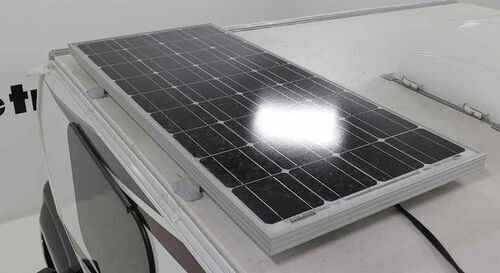
The silicon cells are set between a cushioned backing material and tempered solar glass to withstand the elements. The glass has low-iron content to provide exceptional transparency, which ensures maximum sunlight collection. Finally, each panel is framed with anodized marine-grade aluminum to resist rust and corrosion.

An adjustable mount kit (sold separately) can increase your solar panel performance by angling it for maximum sun exposure. This kit replaces the panel's existing brackets and allows it to tilt at 3 different angles. This also improves solar charging during winter months when the sun is lower in the sky.
Charging and Protecting RV Battery Bank

The solar controller prevents harmful overcharging by adjusting the power generated by the solar panels before it reaches your batteries. It uses pulse width modulation technology to regulate the output through pulses that provide a consistent charge. Typically, this type of technology is a good fit for smaller systems with lower voltages.
Using a multistage charging system, the controller automatically switches voltages while the battery bank charges. This accelerates the charge, but also helps extend battery life by adjusting the voltage during the different modes. The controller is compatible with multiple battery types and includes preset charging profiles for sealed/gel, AGM, flooded/wet cell, and lithium batteries.
Charging Modes
- Bulk: This mode charges at the full rated load for a quicker recharge time. As the name suggests, this is where the bulk of the charging happens. It typically charges the battery to at least 80% capacity.
- Absorption : This mode provides controlled voltage to ensure a full charge. Once the battery reaches between 80% to 90% capacity, the absorption state will kick in and start charging at a regulated voltage. In each charging profile, this mode is set to last for 30 minutes after the bulk charge is completed.
- Float : Once the battery reaches full charge, this mode maintains a lower voltage to compensate for self-discharge. This reduces battery stress and minimizes gassing and water loss.
- Equalization : On flooded/wet cell batteries, this mode activates to prevent stratification and sulfate buildup during extended float cycles. These two issues can damage a battery by causing the accumulation of acid at the bottom of the battery and hardened sulfate crystals on the battery plates. This mode is especially helpful when your battery is going unused during storage.
With Maximum Power Boost Technology, you can simply press a button to activate Bulk mode for the highest charging voltage. This lets you quickly top off your battery bank before the end of the day by capturing as much power as possible.

This solar controller is built to charge two battery banks and has terminals for a primary and secondary battery. Your primary battery will receive the full current until it is completely charged. Then, your secondary battery will start to draw the charge current.

The backlit, digital display acts as an information center for your solar panel output. It shows the charging current, battery voltage, and battery state of charge. It also allows you to input your battery type and choose a charging profile. Additionally, a built-in USB port on the front of the controller provides a convenient outlet to charge your cell phone or tablet.
It includes a Bluetooth function that lets you connect the controller to your smartphone or tablet with the free Go Power! Connect app. With this app, you can wirelessly view the same live battery information included on the display. Also, you can control your battery profile and toggle Maximum Power Boost Technology mode.
Lastly, the controller includes several built-in safety features to help protect your equipment. The charging process will shut down if the controller starts to overheat and when an overcurrent is detected. Also, if the battery or solar panel is wired incorrectly, it activates a reverse polarity alarm.
Powering RV Electronics and Appliances
After the battery bank has been charged, the pure sine wave inverter charger changes DC output into AC output and sends it to the electrical system. It creates clean power with low distortion, making it safe, efficient, and perfect for sensitive electronics like computers. Plus, the inverter can generate 4,800 starting watts and 3,000 running watts which is a great fit for larger appliances or multiple devices.

The inverter charger includes AC input and output terminals that connect to your AC panel and shore power input. It has DC input terminals which connect to your batteries. Additionally, it has ports for the fixed-mount remote and battery sensor. It also has 2 LEDs that show fault conditions and operation mode. Lastly, it has a power switch that controls the inverter charger.
The system includes a number of safety features. It offers protection from over/under voltage and overloading. The inverter also uses a heat sink process to protect from extreme temperatures, and an internal cooling fan removes excess heat from the unit.

A fixed-mount remote lets you monitor and control the inverter charger from inside your RV. It includes a digital display that shows the voltage, output power, status, temperature, and charging activity. You can also customize settings like your battery profile, charge rate, and more. And it has a power button that lets you turn the inverter charger on and off.
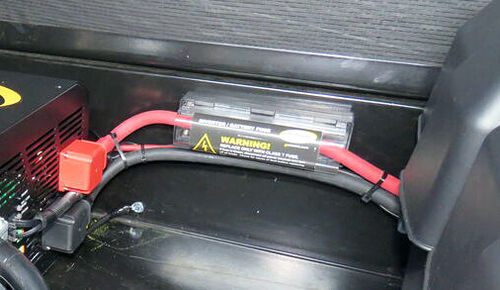
The DC-rated 400-amp fuse uses a slow blow time-delay feature to withstand surge current. This means it can handle short surges over 400 amps without blowing the fuse, which is great for devices with motors that require more energy to start.

The fuse is housed in a polycarbonate block that features an insulated fiberglass reinforced base. The block has a V-0 flame-retardant rating, which means it will stop burning within 10 seconds if a fire were to occur. It also comes with a transparent cover to keep the connections protected.
Automatically Switches to Shore Power
The inverter charger's built-in automatic transfer switch selects the primary source of AC current. Because this system utilizes solar power, the switch inside of this inverter charger has been pre-wired to automatically change from inverter to shore power to conserve battery life. This switch includes (2) 50-amp legs, which allows you to use up to 100 amps by passing through 12,000 watts on a shore power service. The legs are rated at 120V each, but they can be used as a 240V split-phase or 240V dual input if needed. This would be useful if your RV has larger appliances, such as a clothes dryer or oven range. However, if you plan on using an on-board generator and shore power, you still need an external transfer switch to link power to the inverter charger. If you are just utilizing shore power, you only need this unit since you are switching between two sources.
To prevent electrical interruptions, the time delay circuit board allows the alternate power source to stabilize before a transfer occurs. Additionally, since the switch only accepts one active source, it protects your electrical system from dangerous backfeed that can damage your equipment.
Charges Your Battery Bank With Shore Power
The inverter charger also includes a smart converter charger that converts AC shore power into DC power to charge your battery bank. If your RV already has a stock converter charger, it will need to be removed to ensure this part of the unit operates properly. It uses a multistage charging system similar to the style detailed previously. It is compatible with sealed/gel, AGM, flooded/wet cell, and lithium batteries. And with the fixed-mount remote, you can select charging profiles for the different battery types.
Battery Temperature Sensor Adds Additional Battery Protection

The battery temperature sensor protects the battery bank from large temperature fluctuations. As the inverter charger experiences changes in temperature, the sensor compensates for those changes by adjusting the voltage during charging to help extend the life of your batteries. This protects from overcharging in hot temperatures and undercharging in cold temperatures. The voltage adjustments also ensure that you are getting the most from your charge.
How It Installs

The system includes (3) 190-watt solar panels, a 3,000-watt pure sine wave inverter charger with a fixed-mount remote, a 30-amp PWM solar controller, a fuse block, MC4 cables, and all the necessary installation hardware.
- Solar Panel: The solar panels install anywhere on your RV roof with included mounting feet and hardware. To maximize sunlight collection, it is important to install the panels where they avoid shadows cast by objects, like an air conditioner or vent. The panels use MC4 cables and branch connectors to connect to the solar controller. These cables can enter the RV through the refrigerator vent or using a Go Power cable entry plate (sold separately). The cable entry plate provides a covered housing and uses a quick connect setup for the MC4 cables.
- Solar Controller: The solar controller flush-mounts to a wall inside your RV. The manual includes a mounting template with measurements to ensure proper installation. It is wired to the solar panel using MC4 cables. Then, the battery bank is wired to the primary terminals on the controller. If you are using additional batteries, they can be connected to the secondary terminals. The included 30-amp fuse is installed between the solar controller and battery for additional current protection.
- Inverter Charger: The inverter charger mounts inside your RV in a dry location with ventilation. It should be installed in close proximity to the battery bank, but not in the same compartment. The DC terminals are wired to the battery bank. There are several ways to connect the inverter section to your RV's electrical system, but this will depend on your rig and how you want to use your inverter. Also, the temperature sensor installs to the negative battery terminal and plugs in the battery temperature port on the inverter charger.
- Inverter Charger Remote: The remote flush mounts to a wall inside your RV and connects to the inverter with the included telephone cable. The manual includes a mounting template with measurements to ensure proper installation.
- Fuse Block: The fuse block is installed between the inverter charger and battery bank to protect your equipment.
Note: This kit may require more wiring and additional parts depending on your RV setup.
Individual Component Specs:
Solar panel:
- Rated power: 190 watts per panel
- Amperage: 9.3 amps per panel
- Voltage: 20.4V per panel
- IP rating: IP67
- MC4 cable length: 25' each
- Dimensions: 59-1/8" long x 26-5/16" wide x 1-1/2" deep
- Weight: 26.4 lbs each
- 25-Year limited warranty
Inverter charger
- Inverter:
- Rated power:
- Running (rated) output: 3,000 watts
- Starting (surge) output: 4,800 watts
- Amperage:
- Running (rated) output: 25 amps
- Starting (surge) output: 52 amps
- Voltage:
- Input: 9 - 17 VDC
- Output: 115 VAC
- Temperature ranges:
- Operating range: -4 F to 104 F
- Storage range: -22 F to 158 F
- Rated power:
- Charger:
- Amperage:
- Input: 18 amps
- Output: 125 amps
- Voltage:
- Input: 80 - 140 VAC
- Output: 5 - 16 VDC
- Amperage:
- Transfer switch:
- Relay rating: 100 amps (2 legs at 50 amps each)
- Voltage: 240V split-phase
- Maximum wire gauge: 4/0 AWG
- Dimensions: 15" long x 11-1/8" wide x 8" tall
- Weight: 49.8 lbs
- 3-Year warranty
Solar controller:
- Maximum input current: 30 amps
- Maximum input voltage: 28V
- Operating temperature range: -40 F to 185 F
- Temperature compensation: -13 mV per F
- Maximum wire gauge: #4 AWG
- Dimensions: 7-1/2" wide x 4-1/4" long x 1-1/4" deep
- Weight: 0.66 lbs
- 5-Year warranty
Fuse block:
- Rating: 400 amps
- Interrupt rating: 50,000 amps
- DC rating: 160 VDC
- Cable length: 10' each
- Cable gauge: 4/0
- Weight: 0.9 lbs
- Dimensions: 7" long x 2-1/2" tall x 2" wide
83297 Go Power! Solar Extreme Charging Kit - RV Solar Charging - 3 Rigid Panels - Inverter Charger with Remote - 30-Amp Digital Regulator/Controller - 600 Watts - 27.9 Amps
Replaces Go Power 82185
Replaces Go Power 34282552 and 82848
Installation Details
California residents: click here
Customer Satisfaction Score:
98% were satisfied with this product
2% of customers were not satisfied
Customer Reviews
Go Power Solar Extreme Charging System - 600 Watt Solar Panels - 3,000 Watt Inverter Charger - 34282185
Average Customer Rating: 4.6 out of 5 stars (8 Customer Reviews)
Going off-grid? This solar charging system is perfect for full-time RV living. The 570-watt solar panels provide DC power to charge your RV's batteries, and the 3,000-watt inverter charger provides AC power to run appliances and electronics.
The Go Power solar system had been a unique install. The parts are completely there in all of the boxes. The instructions state that the solar panel positive and negative wires should attach to the battery directly from the MPPT charge controller yet I have done research and actually you can connect these wires to the inverter and negative bus through a fuse able link. The panels have done really well on the roof of our Extra Tall Sprinter van and not much wind noise has been detected. Tying up the solar cabling has been a challenge as there are no hooks or ability to attach cabling to the underside of the panels to keep them from 'flapping' during driving. The system works really well and although with 570 watts of panels we figured that we would produce much more energy than what we have been, 5-6 amps, during sunny days in WA state. The remote is very easy to program and understand the readout. So far the inverter has worked well without any problems and although we have yet to install a 'Shore Power' cable to the inverter the system has performed well during our camping and everyday use. A great way to start out with this system rather than purchasing the components separately.
Installed a 9 panel array on a customers Pinnacle 5th Wheel. Extreme is not a strong enough word for this setup. Wished we had known all the "extra" little parts we were going to need when we made the rather large purchase(s) from etrailer for this job. Needed higher output controllers based on the amount of solar panels we were using, still need a few more batteries. Overall, we hope our customer will be quite pleased with his extreme setup and has many hours of boondocking in his future.

The best accessory I have ever added!!!! if you don't have solar for your RV... you'er living in the dark ages Quiet, oderless unlimited power
Just getting started.......pretty simple instructions......might have to have some help with the inverter/converter/charger
Just received order it’s a pleasure dealing with this company. I’ve open everything and it all looks like it’s here a great price and good customer service, my only disappointment is a complete solar package as this is really not complete without the entry plate, that looks s my only beef. Other then that great company customer service and delivered in a timely matter thank you
Brian
See what our Experts say about this Go Power RV Solar Panels
- Solar Power System Recommendations For A Food Truck For what you're trying to do I recommend the Go Power Solar Extreme Charging System - 570 Watt Solar Panels - 3,000 Watt Inverter Charger Item # 34282185. This solar charging system has the ability to invert AC shore power to DC power as well for rainy days. The three panels on this each measure 59-1/8" long x 26-5/16" wide x 1-1/2" deep so if you can't place them all next to each other we offer extension cables with an entry plate for installing the cable through the roof of your truck...
view full answer... - Options to Keep a 6,000 Btu Window A/C Unit Running in a Trailer If the Power Goes OutThe Go Power Solar Extreme Charging System # 34282185 system paired with an 800 hour lithium battery bank will get you approximately a half day of run time for your 6,000 Btu window a/c unit. So while it is possible to run for emergency situations, it is not going to be an ideal situation. Especially from a cost perspective. Your best option would be to get a generator system that has an auto on feature when power is lost. Or you could go with the solar option to buy you enough time to...
view full answer... - How Does Go Power Extreme Solar kit part # 34282185 Connect to Different Battery BanksThe manual for the Go Power Extreme Solar kit part # 34282185 states that connecting to the batteries directly is the best way make the connections to them. If you have a transfer switch between battery banks though you'd need to charge through that so that you aren't attempting to charge different battery banks at various states of charge. I attached a picture that shows the portion of the install instructions that covers the battery connections.
view full answer... - Is Larger Solar Controller Needed for Go Power Solar Extreme Charging SystemA larger controller with an overage buffer is not something that is available for the Go Power Solar Extreme Charging System - 570 Watt Solar Panels - 3,000 Watt Inverter Charger # 34282185. It is also not needed because the controller on this system is actually rated for "a maximum continuous DC input current of 37.5A" as you can see by the cut out of the linked instructions of the controller. So the safety values you were referencing are already included in the 30 amp rating, as per...
view full answer... - Should You Wire Go Power Solar Panels In Parallel Or SeriesSystems with a 30 amp solar charge controller or lower are run parallel while systems with a higher amp solar charge controller can be run in series or series parallel. The Go Power Solar Extreme Charging System - 570 Watt Solar Panels - 3,000 Watt Inverter Charger Item # 34282185 you linked to has a 30 amp solar charge controller so it will be3 wired in parallel.
view full answer... - What Does OTP Error Code of Go Power Solar Panel Controller MeanI checked with Go Power and the OTP error code means the battery or inverter is too hot. They recommend checking the battery connections and checking to see if it's too hot or not. If it's not take off the sensor like you did already.
view full answer... - Can I Install Extra Panels with the Go Power 570 # 34282185?When considering the Go Power Solar Extreme Charging System - 570 Watt Solar Panels # 34282185, it actually comes with 3,000 watts of running output. If you want to add more panels, you can add the Go Power Overlander Expansion Kit - 190 Watt Solar Panel # 34282182. With this expansion, you will be able to connect to the Go Power 570 using MC4 branch connectors. However, it is important to note that the controller for the # 34282185 is only rated up to 30 amps. If you wish to do the expansion...
view full answer... - Go Power Solar Elite 2,000 Watt Inverter or Go Power Solar Extreme 3,000 Watt InverterBoth systems are certainly practical, it really just completely depends on your power consumption, with the Solar Extreme kit being the highest available, and something that you would need if you used quite a bit of power. You'll need to know how many amp-hours of battery you use, either through some math with the appliances you use, or by testing it out with a battery monitor. I have added a link below to a help article I recommend checking out that has some details on how to go about...
view full answer... - Solar Panel Kit and Battery for Gulfstream Mini that Will Be Using AC UnitRV AC units do draw quite a bit of wattage/amperage but it really comes down to which system you have as they vary a little bit. As far as an all inclusive kit for the solar panel that comes with the wiring, controller, and charger for the battery bank the # 34282185 you referenced would be a really solid place to start with plenty of charging capability. Then for a battery the Power Sonic Lithium Battery part # PS64FR is rated for 200 amp hours which would give you plenty of power to...
view full answer... - Which Solar Panel System for 2008 Keystone Montana Running Small Appliances and Air ConditioningA lot of this depends on how much power those appliances use, and then the size of your battery bank. If you've got a 2 battery bank will 2- 200 amp hour batteries, you'll have about 400 amp hours total of power; if you're using lead acid batteries you're going to cut that in half since depleting those batteries more than 50% will significantly shorten the life span of those batteries. I'm linking an article that we've put together that helps outline how you can do a test run of how much...
view full answer... - How to Monitor the Battery with Go Power Solar Extreme Charging System # 34282185The Go Power Solar Extreme Charging System # 34282185 includes a fixed-mount remote which lets you control and monitor the inverter charger. You do not need an external battery monitor. Check out the video linked below for more details.
view full answer... - Add-On Expansion Kit For Go Power Extreme Charging SystemYes, you can use the Go Power Overlander Expansion Kit # 34282182 to add-onto your current Go Power Solar Extreme Charging System # 34282185. I have attached a few videos for you to check out as well.
view full answer... - Are 6v Batteries Better Than 12v Batteries For A Solar Panel System People do prefer to use 6v batteries in series because they can better handle 50% discharge cycles than a 12v will. They also tend to have more charge/discharge cycles in their lifetime compared to a standard 12v. That being said, the abilities of the battery to handle discharge and the amount of charging cycles they have can vary greatly depending on the manufacturer. A lot of people setting up larger solar panel systems, like the Go Power Solar Extreme Charging System # 34282185 you...
view full answer... - Solar Power System to Run and A/C and AppliancesThe Go Power Solar Extreme Charging System - 570 Watt Solar Panels - 3,000 Watt Inverter Charger # 34282185 paired with a battery bank is the largest solar system available from Go Power and will run an A/C and small appliances. A/C's are one of the biggest power draws you can have. While this system will run them, it will still be limited compared to shore power or generator power as far as how long they will last. It is compatible with sealed/gel, AGM, flooded/wet cell, and lithium batteries....
view full answer... - Best Solar Panels to use on a 2021 Jayco PinnacleWe have several options of solar panels to keep your 2021 Jayco Pinnacle's battery charged. If you're only looking to give your DC battery a little help, then I recommend the Go Power Portable 90-Watt, part # 34282729. The great thing about this one and the other portable options is the fact that they don't have to be mounted to the top of your RV, so you can park in the shade and use the extension cord to still get that charge. I've linked to a video review of this line. If you're wanting...
view full answer... - Could Solar Panels Power Advent AC Unit on RVIf the solar panel could provide 15 amps of 12 volt power the Advent Air RV Air Conditioner # ACM135CH could be ran off of it. Since solar panel as a direct power source can fluctuate depending on access to sunlight it's not the wisest to run it straight off of a solar panel and instead having a battery bank get charged from the panel which then provides the power for the AC unit. Or use a generator like # 333-0003. For a panel setup that has the amperage you'd need we have the part #...
view full answer... - Does Go Power Solar Extreme Charging System Use Inverter and Converter When Attached to Shore PowerI spoke with Go Power about your question and this is what they sent me in response: "They are correct in the weekender the converter is wired into the transfer switch so it only comes on when shore power is applied. In the larger kits the converter is disabled because the inverter also contains a converter. You don’t want the inverter powering a converter which is trying to charge the batteries. Big current draw loop." They also sent me a picture that I attached to this page that...
view full answer... - Solar Panel Kit for RV with 3,000 watts and 100 Amp Lithium BatteryFor the wattage you are looking for the Go Power Solar Extreme Charging System # 34282185 would work really well. It has three panels but the wattage output is 3,000 watts running and 4,800 watts surge and comes with the converter and install hardware needed. Then for a 100 amp hour lithium battery we have the Go Power Lithium battery # 34282738.
view full answer... - Can I Use 6v Batteries Wired In Series For Extended Boondocking with AC UnitYou would need at least 4 of the # BRW84FR batteries to give you the bare minimum that you'll require to consider being able to make this work for you, and I would strongly recommend going upwards of 8 batteries because of the extended period of time that you'll be off grid. Because batteries can only drain so much, and because you're going to be pulling almost half of the power off of one of the # BRW84FR batteries in just 1 hour of AC use (150ah), you could easily run through 50% of your...
view full answer... - Adding Additional Panels to Go Power Extreme If you want to add more panels, you can add the Go Power Overlander Expansion Kit, # 34282185, that is rated for 190 watts. You will need a higher-rated controller such as the 60-amp Go Power MPPT Solar Charge Controller, # GP54FR. The Go Power Solar Extreme Charging System, # 34282185 includes (3) 190-watt solar panels for a total of 570 watts. These feed a 30 amp controller at a maximum of 9.3 amps per panel. The 60-amp Go Power MPPT Solar Charge Controller, # GP54FR uses maximum...
view full answer... - Installation Instructions for Go Power Solar Elite Charging SystemThat is correct. When installing the Go Power Solar Elite Charging System # 34282185 don't want any type of power being fed to your power distribution panel from the battery bank or shore power while you're doing this installation. I've linked our installation video that details the process that I do recommend checking out, as well as the installation instructions.
view full answer... - Why Doesnt Go Power Extreme 3 Panel Expansion Use Connector GP22VRThe Go Power Extreme kit part # 34282185 uses like a modular connection that allows to easily add more panels as basically you would just attach an additional connector and that's all you'd need to do. The part # GP22VR is a three panel setup that doesn't have the same room to grow but it accomplishes the same for three panels basically. If you fastforward to the 14 minute mark of the attached install video you can see what I mean.
view full answer... - What Size Of Battery System Should Be Used With The Go Power Solar Extreme?The recommended battery size for the Go Power Solar Extreme Charging System # 34282185 is in fact 250Ah. This will do a great job running your refrigerator, lights, etc. I have attached a video and the instruction manual for the Solar Power Extreme System for you to check out as well.
view full answer... - Can You Add A Solar Panel To The Go Power Solar Extreme Charging SystemYou can use the Go Power Overlander Expansion Kit - 190 Watt Solar Panel # 34282182 to add one more solar panel to the Go Power Solar Extreme Charging System - 570 Watt Solar Panels - 3,000 Watt Inverter Charger # 34282185. And the remote you are inquiring about is the Remote for Go Power MPPT Solar Charge Controller # GP34FR. If you do get this I highly suggest going with the Bluetooth Dongle for Go Power MPPT Solar Charge Controller # GP94FR. This Bluetooth dongle lets you monitor...
view full answer...
Do you have a question about this RV Solar Panel?
Info for this part was:















At etrailer.com we provide the best information available about the products we sell. We take the quality of our information seriously so that you can get the right part the first time. Let us know if anything is missing or if you have any questions.






































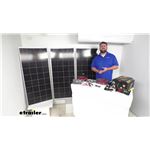



































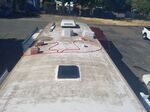
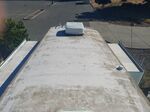
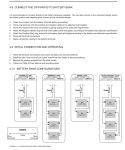

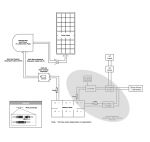
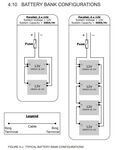
Tcinwa
8/8/2021
Continuing to work well! Found out the MPPT controller will monitor the battery based upon draw on system. In other words use energy and the ability of the system produces that ability. A great system altogether.